Your eyebrows frame your face and enhance natural beauty. Choosing the right color can transform your look. This guide helps you navigate the world of eyebrow color, ensuring you find the perfect shade to complement your features and style. With various products and techniques available, achieving defined, polished brows has never been easier.
1.1 Why Eyebrow Color Matters
Eyebrow color plays a vital role in framing your face and enhancing your natural beauty. It creates balance and harmony, ensuring your features stand out. The right shade complements your hair color and skin tone, while the wrong one can disrupt your look. Eyebrow color isn’t just about aesthetics; it also boosts confidence and polishes your overall style. Whether you prefer natural or dramatic, the perfect shade can elevate your appearance, making it a crucial element in your beauty routine.
1.2 Brief Overview of Eyebrow Color Options
Eyebrow color options are diverse, catering to various preferences and needs. From natural looks to bold statements, choices include pencils, powders, gels, and dyes. Each product offers unique benefits, such as precision, buildability, and long-lasting results. Shades range across blonde, brunette, redhead, and gray tones, ensuring everyone finds their perfect match. Whether aiming for subtle definition or dramatic flair, the right product and shade can enhance your brows, boosting confidence and transforming your look with ease and versatility.
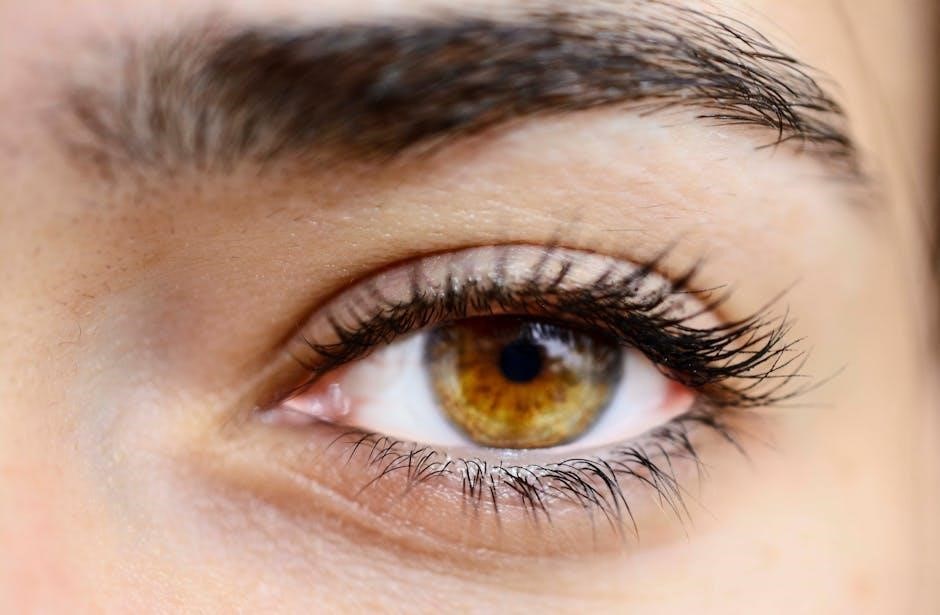
Determining Your Natural Eyebrow Color
Match your skin tone and natural hair color. Test shades on your cheek or beside your brow. Choose colors 1-2 tones lighter or darker for a natural look.
2.1 Understanding Skin Tone and Hair Color Relationship
Understanding your skin tone and natural hair color is key to selecting the right eyebrow shade. Cool skin tones pair well with ash or taupe hues, while warm tones suit caramel or honey shades. Neutral skin tones can opt for versatile, balanced colors. Your natural hair color typically guides your brow color choice, but slight variations can enhance your look. For example, brunettes may opt for a shade richer than their hair, while blondes can choose lighter tones; This harmony creates a balanced and polished appearance.
2.2 How to Test Eyebrow Colors on Your Skin
Testing eyebrow colors on your skin ensures a perfect match. Dab or swab the color on your cheek or beside your brow to see how it looks. The shade should complement your skin tone and hair color, typically 1-2 shades lighter or darker. Cool skin tones suit ash or taupe hues, while warm tones pair well with caramel or honey shades. Neutral tones can opt for balanced colors. This method helps you avoid mismatched brows and ensures a harmonious look that enhances your natural beauty.
Choosing the Right Eyebrow Product
Eyebrow products like pencils, powders, gels, and dyes cater to different needs. Pencils offer precision, powders create natural looks, gels define, and dyes provide semi-permanent solutions. Choose wisely!
3.1 Eyebrow Pencils: Benefits and Shade Selection
Eyebrow pencils are ideal for precise application and filling sparse areas. They offer control and natural-looking results. When selecting a shade, opt for one that matches or is slightly darker than your natural brow color. For blondes, lighter taupe shades work well, while brunettes can choose deeper, richer tones. Redheads may prefer auburn or caramel hues. Test the pencil on your skin beside your brow to ensure the color complements your tone. Products like the Exacto Brow Pencil provide versatile, buildable options for a flawless finish.
3.2 Eyebrow Powders: Best for Natural Looks
Eyebrow powders are perfect for achieving a soft, natural appearance. They blend seamlessly with brow hairs, creating a subtle, filled-in look. When selecting a powder, choose a shade that aligns with your natural brow color or is one tone lighter for a more understated effect. Powders are ideal for those with sparse brows, as they add volume and texture without looking too harsh. Apply lightly with a brush for a defined yet effortless finish, ensuring a harmonious balance with your overall aesthetic.
3.3 Eyebrow Gels: For a Defined and Polished Finish
Eyebrow gels are ideal for creating a sleek, polished look. They coat brow hairs with rich color, adding definition and depth. Unlike pencils or powders, gels provide a more fluid application, allowing for precise coverage. For a natural appearance, choose a shade close to your brow color. To enhance, opt for a slightly darker tone. Gels are excellent for taming unruly hairs and filling sparse areas. Their long-lasting formula ensures your brows stay vibrant and perfectly shaped throughout the day. Use a small brush to apply, starting from the arch and blending towards the ends for a seamless finish.
3.4 Eyebrow Dyes: Semi-Permanent Solutions

Eyebrow dyes offer a semi-permanent solution for enhancing your brow color. These products use pigments that adhere to brow hairs, delivering long-lasting results. Dyes are available in various shades to match different hair colors and preferences. They are particularly effective for sparse or light brows, creating a fuller appearance. Application involves mixing the dye and developer, then applying it to the brows for a set time. Professional application is recommended for precise results. Proper aftercare is essential to maintain color vibrancy and ensure optimal longevity of the dye. This method is ideal for those seeking a low-maintenance, consistent brow look.
Matching Eyebrow Color to Hair Color
Generally, your eyebrow color should be 1-2 shades darker than your hair color for a natural look. However, this can vary based on skin tone and personal preference. Blondes often opt for lighter shades, brunettes for deeper tones, and redheads for unique, complementary hues. This chapter explores how to harmonize your brow color with your hair for a cohesive appearance;
4.1 Blondes: Finding the Perfect Blonde Shades
For blondes, finding the perfect eyebrow shade is all about balance. Opt for a color that’s 1-2 shades deeper than your hair to avoid washed-out brows. Ash and golden blonde tones work well for cool skin, while honey and caramel shades complement warm skin. Test colors on your cheek or beside your brow to ensure a natural match. Avoid overly dark shades, as they can contrast harshly with lighter hair. The right blonde brow shade enhances your features without looking artificial, keeping your look cohesive and polished.
4.2 Brunettes: Selecting Deep, Rich Tones
Brunettes can opt for deep, rich tones that complement their hair color and skin tone. For cooler skin, ash-based shades like dark brown or espresso work well, while warmer skin tones suit chestnut or caramel hues. Avoid overly harsh contrasts—brows should be 1-2 shades darker than your hair. Soft brown shades are ideal for lighter brunettes, while deeper tones like charcoal or coffee suit darker hair. Balancing your brow color with your natural palette ensures a polished, cohesive look that enhances your features naturally.
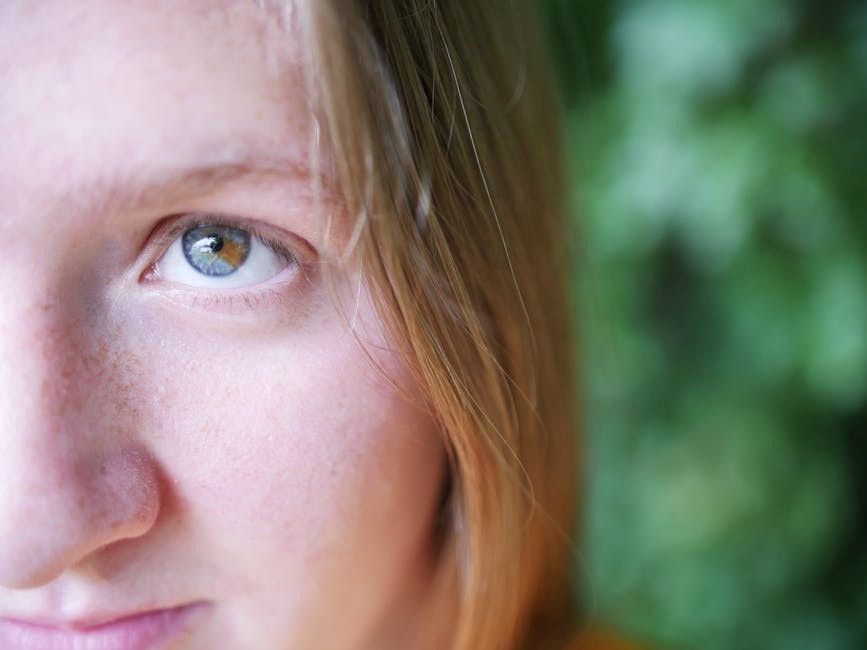
4.3 Redheads: Unique Considerations for Red Hair
Redheads face unique challenges in choosing brow colors, as their hair often has distinct undertones. Warm red tones pair well with auburn or caramel shades, while cool red tones suit ash or berry-inspired hues. Avoid matching brow color exactly to hair color; instead, opt for a shade slightly deeper or lighter. Test colors on your cheek or skin beside your brow to ensure harmony. For vibrant redheads, subtle, natural tones like soft ginger or taupe can add balance without competing with your hair. Professional tinting is also a great option for precise customization.
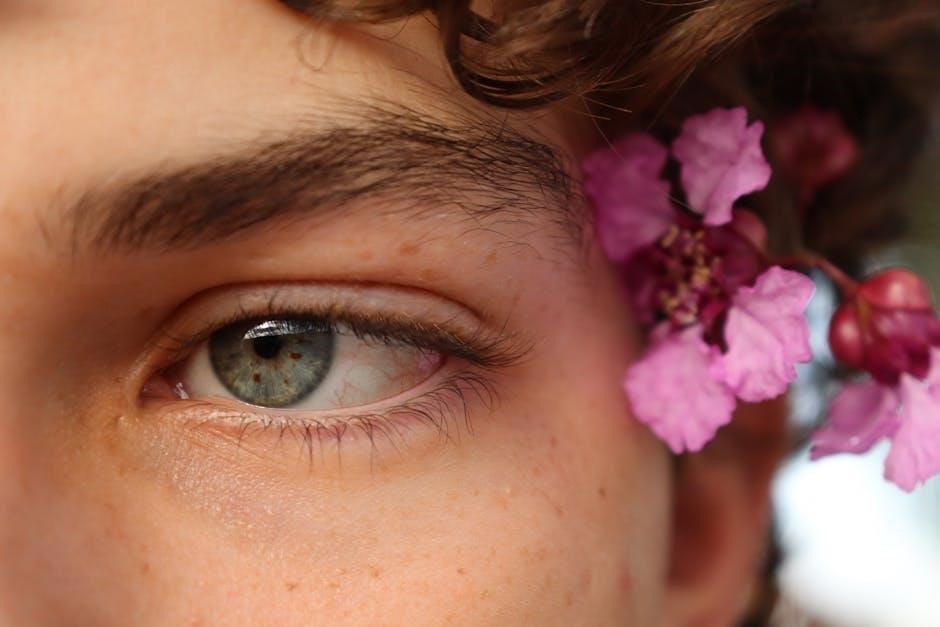
Maintaining Your Eyebrow Color
Proper maintenance ensures your eyebrow color stays vibrant and defined. Regular touch-ups, using the right products, and protective techniques help extend color longevity for a polished look.
5.1 Tips for Long-Lasting Eyebrow Color
For long-lasting results, apply products on clean, dry brows. Avoid oil-based cleansers, as they can fade color faster. Use light strokes when applying pencils or gels to prevent smudging. Setting with a brow gel helps maintain definition throughout the day. Regular touch-ups every 1-2 weeks keep colors vibrant, especially for semi-permanent dyes. Proper care ensures your brows stay polished and expressive without frequent reapplication.
5.2 How to Touch Up Fading Colors
Touching up fading eyebrow colors can be done with a brow pencil or powder. Start by identifying areas where the color has faded most. Lightly fill these spots using short, precise strokes with a pencil or a small brush for powder. Blend gently to match the surrounding color. For semi-permanent dyes, a quick reapplication or a tint touch-up can restore vibrancy. Regular touch-ups every few weeks maintain consistency and prevent uneven tones, ensuring your brows stay defined and polished.
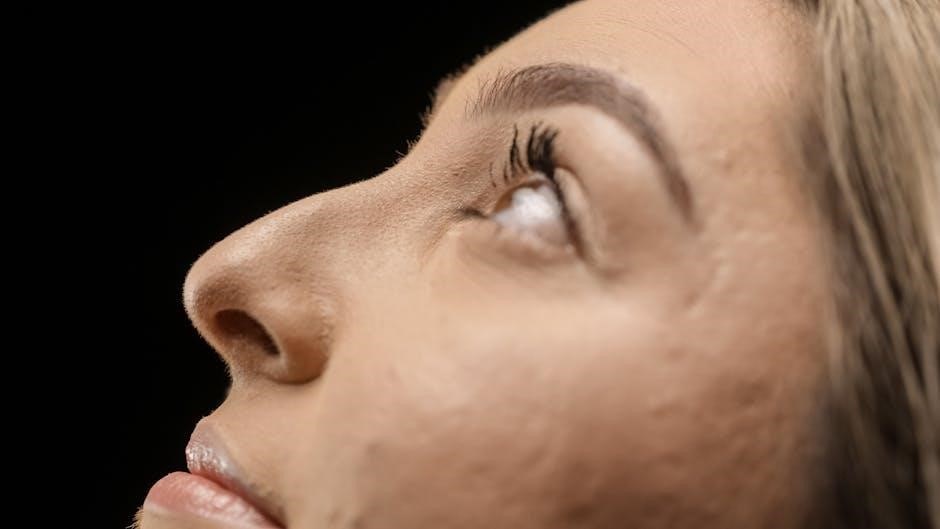
Tools and Techniques for Applying Eyebrow Color
High-quality tools like brow brushes, pencils, and gels are essential for precise application. Techniques such as blending, shaping, and layering ensure a polished and professional finish.
6.1 The Importance of Brow Brushes
Brow brushes are essential tools for achieving precise and even eyebrow color application. They help in blending and grooming, ensuring a polished look. Angled brushes are ideal for detailing, while spoolie brushes blend color seamlessly. Using the right brush enhances the natural appearance of your brows and provides better control over the product. Investing in a quality brow brush elevates your eyebrow game, making it easier to create defined, professional-looking brows at home.
6.2 Measuring and Shaping for Accuracy
Measuring and shaping your brows is key to achieving a balanced look. Use a pencil or ruler to mark where your brow should start and end, aligning with your facial features. The beginning of your brow should align with your nose, and the end should align with the outer corner of your eye. Symmetry is crucial—slight imbalances can throw off your entire look. Adjust the shape based on your face shape to enhance natural features. Accurate measuring ensures your brows complement your face, setting the foundation for effective coloring.
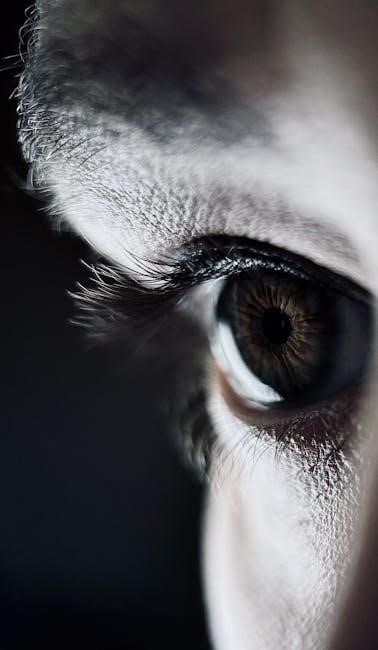
Special Considerations
Gray hair and sparse brows require tailored approaches. Redheads may need unique color matching. Testing colors on skin ensures compatibility, while maintenance tips keep results vibrant and consistent.
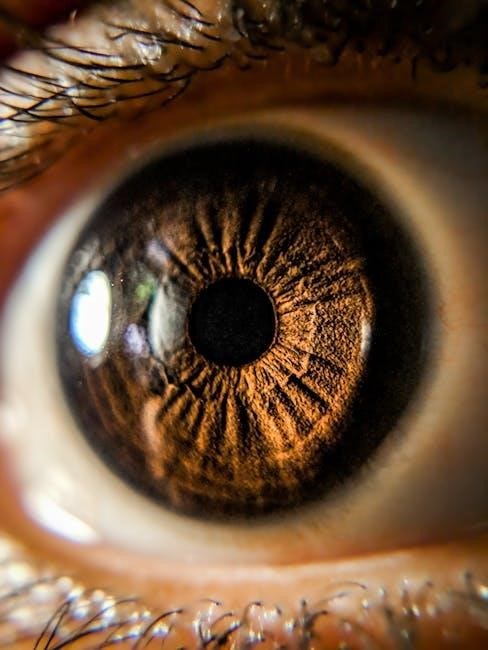
7.1 Eyebrow Color for Gray Hair
Gray hair brings unique challenges for eyebrow color. As natural pigmentation fades, brows may lose definition. Temporary color products like Tom Ford’s Fibre Brow Gel or the Madluvv Brow Stamp can add shape and structure. For a more natural look, choose a shade close to your original hair color. Testing colors on the skin ensures compatibility. Regular touch-ups maintain vibrancy, while proper care prevents fading. Balancing gray hair with the right brow color enhances facial harmony and restores a youthful appearance.
7.2 Unique Needs for Sparse or Thin Brows
Sparse or thin brows require careful attention to achieve a fuller, more defined look. Tinting is a great option, as it grabs lighter hairs for a dramatic yet natural effect. Brow gels and powders can also add texture and volume. For sparse areas, use a brow pencil to fill in gaps gently. Avoid overly dark colors, as they can worsen the appearance of thinness. Regular maintenance and proper product selection are key to enhancing sparse brows effectively and creating a balanced, polished appearance.
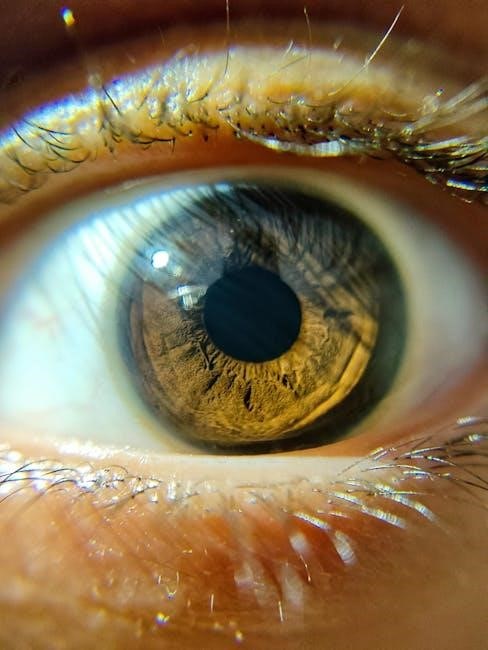
Expert Advice and Common Mistakes
Consult professionals for personalized advice, as they can help choose the perfect shade. Stick to shades close to your natural hair color and avoid harsh lines for a natural look.
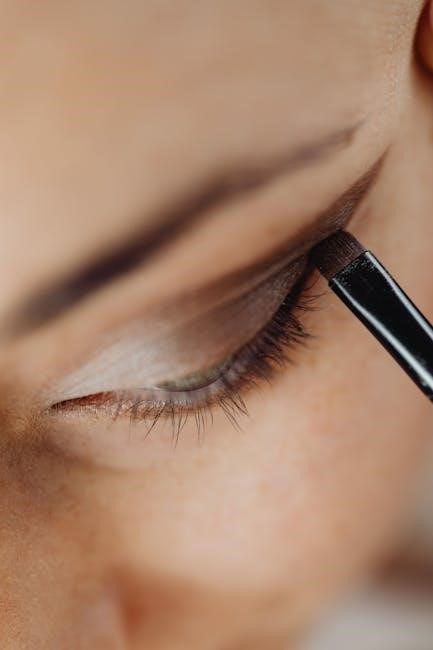
8.1 Professional Tips for Choosing the Right Shade
Professionals recommend testing shades on your skin to ensure a natural match. Start with a lighter shade and build color gradually. Consider your hair color, skin tone, and undertones for a harmonious look. Avoid over-darkening, as it can look unnatural. For brunettes, opt for deep, rich tones, while blondes should stick to lighter, ashy shades. Redheads may find unique options like auburn or caramel. Always blend gently for a polished finish and avoid harsh lines. Testing on the jawline or beside your brow can help determine the perfect shade.
8.2 Avoiding Common Mistakes in Brow Coloring
Avoid over-darkening your brows, as it can create an unnatural look. Always start with a lighter shade and build color gradually. Ignore the temptation to match your brow color exactly to your hair color; instead, opt for a shade slightly darker or lighter. Never skip testing the color on your skin before applying. Overfilling or using harsh strokes can make brows appear artificial. Blend gently and avoid sharp lines for a more natural finish. Lastly, consider your skin tone and undertones to prevent mismatched shades.